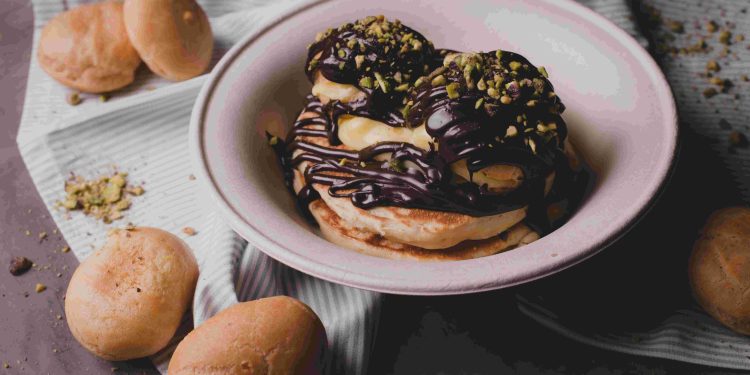Fresh Twist Recipe Ideas
Recipes have always been a cornerstone of personal and cultural expression. However, we often find ourselves trapped in the same culinary routines. What if we could breathe life into our kitchens by challenging traditional norms and fusing flavors in ways unheard of? The future of cooking is not just about mastering a dish—it’s about innovation, sustainability, and creating a sensory experience that transcends the ordinary. Today, let’s explore how cross-disciplinary thinking and a willingness to experiment can revolutionize our recipes and redefine our connection with food.

Personal Encounter: A Recipe Revolution
Years ago, I found myself stuck in a culinary rut. My cooking followed a predictable path—spaghetti on Mondays, chicken stir fry on Wednesdays, a leftover mashup on Fridays. One day, as I stared at a nearly empty refrigerator, an idea struck me: what if I combined ingredients that don’t traditionally go together? I pulled out strawberries, basil, and goat cheese, creating an unexpected salad that sparked excitement at the dinner table. What began as desperation redefined the way I approached cooking. Since then, I’ve adopted one mantra: challenge the norm, and let creativity guide your spatula.
Breaking Down Culinary Boundaries
Our routine recipes reflect cultural norms, traditions, and often outdated notions of flavor pairings. Psychologists tell us that humans crave novelty but fear deviation—a paradox that often keeps us from exploring bold new ideas. Here’s a thought: what if we treated recipes not as fixed formulas, but as living organisms, subject to constant evolution? By borrowing principles from technology (iterative adaptation), business strategy (risk management), and psychology (embracing the unknown), we open doors to unparalleled creativity in cooking.
-
Philosophy in the Kitchen:
Question accepted flavor pairings (e.g., does cheese always belong with pasta?). -
Technology Meets Cooking:
Experiment with AI-based recipe generators for surprising combinations. -
Interdisciplinary Mashups:
Apply business innovation techniques, such as user-centric design, to recipe development.
Predicting the Future of Cooking
The culinary world is evolving rapidly, driven by trends that extend far beyond the stovetop. In the next decade, we’re likely to see increased adoption of sustainable food practices, greater popularity of plant-based innovations, and the rise of cooking as a form of artistic expression. Gig economy platforms may enable chefs to collaborate on global recipe databases in real time, while advancements in 3D printing could lead to personalized food designs. Imagine whisking up an entirely new dish shaped by algorithms, tailored for your palate, and created using eco-friendly ingredients—it’s not science fiction; it’s the future of food.
Practical Tips: Reinventing Recipes at Home
- Start with one unexpected ingredient—examples include vanilla in pasta sauces or coffee grounds in meat rubs.
- Embrace cross-cultural experimentation—try blending elements from Latin American and Asian cuisines.
- Use seasonal produce as a foundation for innovation.
- Implement mindful cooking practices—focus on the sensory experience of taste, texture, and aroma.
- Document and iterate your experiments to create your own “recipe evolution” journal.
Frequently Asked Questions
- What’s the easiest way to start experimenting with recipes?
- Begin by swapping out one ingredient in a dish you already know well. For instance, replace regular salt with smoked salt or add fresh herbs not typically used in your cuisine.
- Are fusion recipes expensive to create?
- Not necessarily. Use affordable, accessible ingredients and let your creativity be the main driver.
- How can I balance bold flavors without overwhelming the dish?
- Focus on ratios. Incorporate bold components incrementally, tasting as you go, and aim for harmony between the core elements of the dish.
Conclusion
The beauty of recipes lies not just in their ability to nourish, but in their potential to inspire creativity and foster connection. By letting go of rigid structures and embracing fresh twists, we elevate both the art and science of cooking. The next time you find yourself standing in the kitchen, ask: what new story can I tell through the ingredients in front of me? Take the leap—challenge tradition, try the unexpected, and become the architect of your own culinary revolution. Remember, every bold experiment in your kitchen can inspire others to rethink their relationship with food. Let’s cook our way into the future—one fresh twist at a time.





















